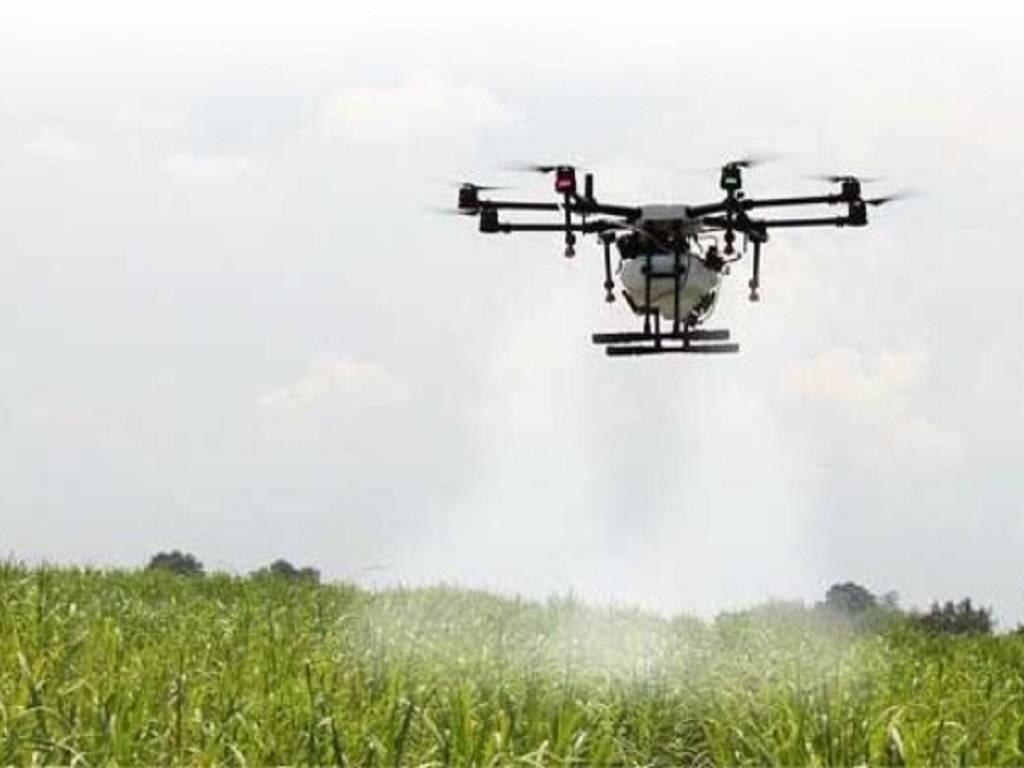
The recent notification by the central government allowing use of drone spraying of pesticides (except herbicides) is a shot in the arm for this exciting new technology. The agrochemical industry is gearing up to meet the challenge of commercializing drone spraying of various pesticides. Coromandel International has initiated the process for regulatory approval of its crop protection products for drone spraying.
Recently the government of India has allowed spraying of pesticides by drones as a means of improving efficiency to benefit farmers. The government recognizes this new technology as the need of the hour and has introduced a slew of measures to promote the use of drones in agriculture.
-
CIBRC issued guidelines for label expansion of existing and new products for drone spraying (October 2021)
-
The Union Agriculture minister released SOPs for use of drones in agricultural spraying (December 2021)
-
The Central govt issued guidelines allowing drone spray of all pesticides in the schedule except herbicides, provisionally for two years. (April 2022)
-
The Central government is also encouraging the production and commercialization of drones though several schemes and subsidies. State governments are also announcing measures to promote the use of drones for agricultural spraying.
The agrochemicals industry has responded enthusiastically to these announcements. Coromandel is actively conducting trials to determine crop safety and obtain regulatory approvals.
This technology holds enormous potential to revolutionize farming. It has many advantages such as water saving, time saving, precision application without wastage and ensures safety of operator.
At the same time, drone spraying of pesticides requires pilots skilled in operating drones and trained in safe and proper use of agrochemicals. Hence, along with a pilot license and experience, the operator must be made aware of various critical aspects regarding safe use of products being sprayed. In this regard, it is essential to meticulously follow the guidelines issued by the central government. These SOP guidelines are a comprehensive set of measures to be taken before, during and after the spraying operations.

Drone spraying and stewardship in agrochemicals – SOPs relating to safe and responsible use of pesticides
We list here some of the important ones to provide a basic idea of what needs to be done.
Aerial spraying operations through drones will be subject to the following rules
-
Use of approved insecticides and formulations
-
Use from approved height and concentration
-
Washing decontamination and first-aid facility
-
Train the drone pilots on clinical effects of Insecticides
-
Operate the drones per guidelines of DGCA and Ministry of Civil Aviation.
Precautions for drone-based pesticide application
Before spraying
-
Pilot trained on safe pesticide use
-
Calibrate the spray to ensure label dosage is applied accurately
-
Check drone is in good condition with no leakages in spraying system
-
Confirm a place for take-off, landing and tank-mix operations
-
Check and mark treated area
-
Set up buffer zone between treated area and non-target crops
-
Do not spray near water sources to avoid polluting them
-
Notify public 24 hrs in advance of operations. Prevent entry of animals and people to the area marked for spraying operations
During Spraying
-
Read labels carefully to understand safety guidance
-
Wear PPE. Operating team to stay downwind end of field and backlight direction
-
Spray first with water to test operations
-
Ensure 2-step dilution to fully dissolve pesticide
-
Check weather for appropriate wind speed / humidity / temperature
-
Ensure appropriate flying height, speed, water volume
-
Strictly follow label instructions for pesticides toxic to non-target organisms
-
Use antri drift nozzles
After Spraying
-
Timely evacuation and transfer to fresh air
-
Triple rinse containers, minise waste, dispose waste per local laws, never burn or bury hazardous waste
-
Securely store plant protection products away from unauthorized people, animals and food. Safely dispose any spills immediately
Critical parameters to be considered
-
Ensure compatibility of drone spraying system with the pesticide
-
Solubility
-
Formulation stability
-
Ability to spray with the nozzle in the drone
-
Adhere to mixing guidelines where applicable
-
-
A training module by NIPHM, Hyderabad shall be mandatory for pilots operating pesticide-spraying drones. The module covers pesticide handling, agri-mission-specific handling protocols, and relevant crop protection guidelines.
Product Stewardship and Farmer Safety
Stewardship is an ethic that embodies the responsible planning and management of resources.
In the case of agrochemical products, stewardship includes responsible planning and management during R&D, manufacturing, logistics (storage, transport, and distribution), marketing, and sales. While the company is in control of the lifecycle until the product leaves its premises, the other stakeholders need to be guided properly. As agrochemicals require very careful handling at all levels, different aspects need to be taken care of at various stages of the product lifecycle. It is most important that the end consumer, namely the farmer, must be informed and guided with respect to responsibly using the product.
As part of its stewardship efforts, Coromandel is intent on following the SOP and guidelines of the government and spreading the message to all farmers so that they can benefit from the technology in a responsible manner.










